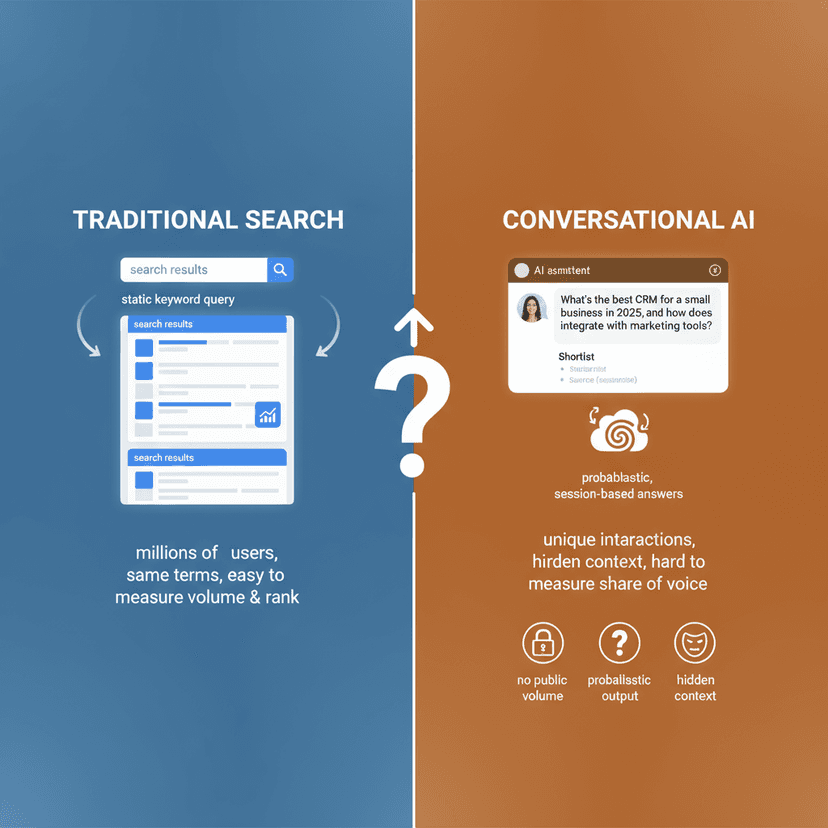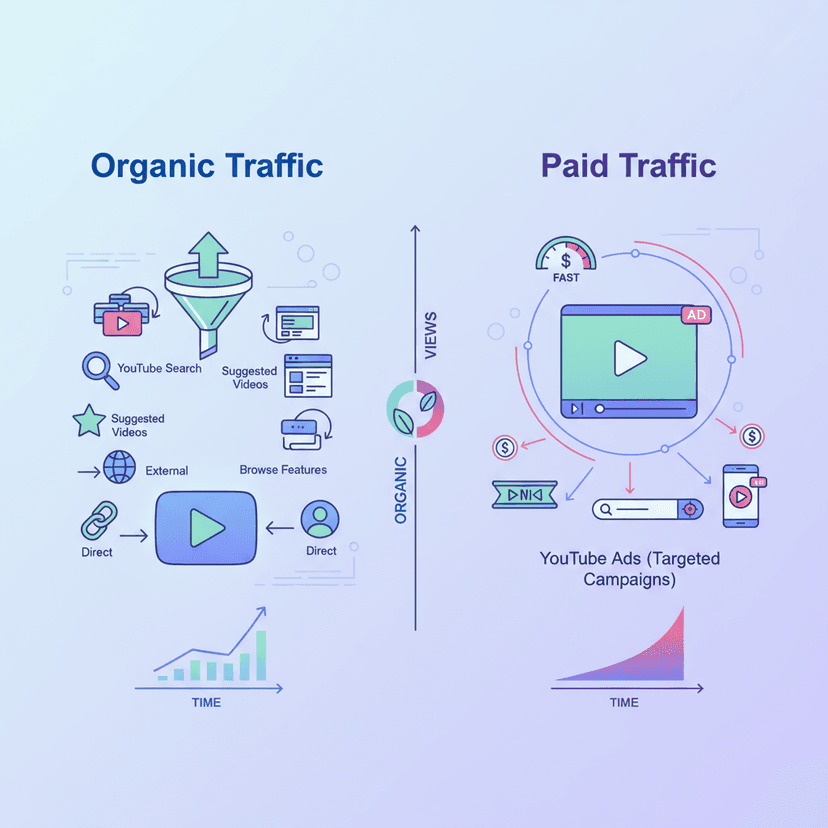Introduction
As the digital ecosystem continues to expand, user experience (UX) has become a critical factor in determining how websites are ranked by search engines. In 2020, Google introduced Core Web Vitals (CWV) as a key component of its page experience signals, emphasizing that performance metrics directly influence how websites are evaluated and ranked. For website owners, marketers, developers, and SEO professionals, understanding these metrics is crucial to achieving and maintaining visibility in search results.
In this comprehensive article, we’ll dive deep into:
- What Core Web Vitals are
- Why they matter for SEO
- How each metric is defined and measured
- The relationship between CWV and other ranking factors
- Tools and strategies to improve your scores
- Real-world case studies and outcomes
What Are Core Web Vitals?
Core Web Vitals are a subset of factors that Google considers essential for delivering a smooth and user-friendly web experience. They measure page loading performance, interactivity, and visual stability. As of now, the three primary CWV metrics are:
- Largest Contentful Paint (LCP) – loading performance
- First Input Delay (FID) – interactivity
- Cumulative Layout Shift (CLS) – visual stability
These metrics apply to all web pages and are part of Google’s Page Experience Update, alongside mobile-friendliness, HTTPS usage, and intrusive interstitial guidelines.
Core web vitals represent Google’s initiative to quantify user experience on the web through measurable, objective metrics rather than subjective assessments. They’re designed to evaluate aspects of web pages that users actually notice and care about—how quickly content appears, how smoothly interactions work, and how stable the layout remains during loading.
What makes core web vitals particularly significant is that they’ve moved performance optimization from being a technical best practice to a direct ranking factor. While developers have long known that faster websites provide better experiences, Google’s decision to incorporate these metrics into its ranking algorithm has elevated their importance for everyone involved in web publishing.
For businesses and content creators, this means that technical performance is no longer just an engineering concern—it’s a marketing priority that directly affects visibility, traffic, and ultimately business outcomes.
Why Core Web Vitals Matter for SEO
Google’s ultimate goal is to improve the user experience across the web. By integrating CWV into ranking signals, Google ensures that websites offering faster, smoother, and more stable browsing experiences are rewarded with better visibility in search results.
Key Reasons They Matter:
- Google’s Algorithm Update: CWV became official ranking factors starting in June 2021, making them more than just performance metrics—they directly impact your SEO performance.
- Competitive Advantage: With so many websites vying for the same keywords, optimized web vitals can serve as a tiebreaker in competitive SERPs.
- Bounce Rate Reduction: Faster and more stable websites retain users longer, reducing bounce rates and increasing conversion.
- Mobile-First Indexing: CWV is crucial for mobile-first indexing, as the performance and UX on mobile devices are often different from desktops.
Beyond these direct ranking implications, core web vitals have significant business implications. Research consistently shows that improved page performance correlates with higher conversion rates, longer session durations, and increased revenue. For example, studies have found that:
- Every 100ms improvement in load time can increase conversion rates by 1%
- Pages that load in 1 second have bounce rates 3x lower than pages that load in 5 seconds
- 53% of mobile users abandon sites that take longer than 3 seconds to load
This means that investing in core web vitals optimization delivers a double benefit: better search visibility and improved user engagement metrics. For e-commerce sites especially, the revenue impact of both these factors can be substantial.
Furthermore, as mobile traffic continues to grow worldwide, the importance of delivering fast, responsive experiences on smaller devices with potentially limited connectivity becomes ever more crucial. Core web vitals provide a framework for prioritizing these performance enhancements in a way that aligns with both user needs and search engine requirements.
Breakdown of the Core Web Vitals Metrics
1. Largest Contentful Paint (LCP)
Definition: Measures the render time of the largest visible content element (text block or image) within the viewport.
- Ideal Score: Less than 2.5 seconds
- Poor Score: More than 4 seconds
Why It Matters: LCP reflects how quickly a page becomes usable for a user. A slow LCP can lead to frustration and early exits.
Common Issues:
- Slow server response times
- Render-blocking JavaScript/CSS
- Large image files
- Slow resource load times
LCP focuses on the loading experience from the user’s perspective. Unlike technical metrics like Time to First Byte (TTFB) or First Contentful Paint (FCP), LCP measures when the main content of a page becomes visible to users. This alignment with user perception makes it particularly valuable.
For most websites, the largest contentful element is often a hero image, video thumbnail, or a large text block like a headline. The timing of when this element appears significantly shapes the user’s first impression of your site’s performance.
Optimizing LCP often requires looking at several technical layers:
- Server performance – How quickly your server responds to requests
- Resource prioritization – Ensuring critical content loads first
- Efficient delivery – Using proper compression and modern image formats
- Caching strategy – Leveraging browser and CDN caching effectively
Sites that prioritize LCP optimization typically see dramatic improvements in perceived performance even when other technical metrics remain similar, demonstrating why Google has chosen this as a key indicator of loading performance.
2. First Input Delay (FID)
Definition: Measures the delay between a user’s first interaction (like clicking a link or tapping a button) and the browser’s ability to respond.
- Ideal Score: Less than 100 ms
- Poor Score: More than 300 ms
Why It Matters: Users expect responsive pages. A long delay between a tap or click and the actual response leads to poor UX.
Common Issues:
- Heavy JavaScript execution
- Long tasks blocking the main thread
- Inefficient code execution
FID quantifies the responsiveness of a page when users try to interact with it. This is critical because even sites that visually load quickly can feel broken if buttons and controls don’t respond immediately.
The psychological impact of input delay is particularly severe—research shows that humans perceive delays of more than 100ms as “sluggish,” while delays beyond 300ms create a disconnected feeling between action and response.
FID is primarily a measurement of main thread congestion in the browser. When JavaScript executes in large, uninterrupted blocks, it prevents the browser from responding to user interactions, creating perceptible lag. This commonly happens during the initial page load when scripts are being parsed and executed.
Strategies for improving FID often involve:
- Code splitting – Breaking JavaScript into smaller chunks
- Deferring non-critical scripts – Delaying scripts not needed for initial interaction
- Web Workers – Moving heavy processing off the main thread
- Event optimization – Ensuring event handlers are efficient
While FID is scheduled to be replaced by INP (Interaction to Next Paint) in future Core Web Vitals updates, the fundamental principle remains the same: interactive elements should respond quickly to maintain a quality user experience.
3. Cumulative Layout Shift (CLS)
Definition: Measures the unexpected layout shifts that occur during page loading.
- Ideal Score: Less than 0.1
- Poor Score: More than 0.25
Why It Matters: Users dislike content that jumps around. A shifting layout can cause them to click the wrong button or lose their place while reading.
Common Issues:
- Images without dimensions
- Ads or embeds injected above content
- Fonts that load late
CLS addresses one of the most frustrating aspects of web browsing—content that unexpectedly moves just as you’re about to interact with it. These layout shifts not only create a jarring visual experience but can lead to serious usability problems when users click or tap the wrong element because it moved at the last second.
The CLS score is calculated by multiplying two factors:
- The impact fraction (how much space the unstable elements take up)
- The distance fraction (how far the elements move)
This creates a score that reflects both how much of your page is unstable and how dramatically it shifts.
Layout shifts typically occur during the loading process when new elements are inserted into the page, causing existing content to be pushed down or rearranged. Common culprits include:
- Images and videos without explicit dimensions
- Dynamically injected content like ads, embeds, or cookie notices
- Custom fonts that swap in after text has already rendered
- Dynamically calculated element heights
Unlike the other core web vitals that primarily affect perceived performance, CLS directly impacts usability and can cause concrete user errors. This makes it particularly important for pages with critical interaction points like checkout flows, signup forms, or navigation elements.
Core Web Vitals and Other Google Ranking Factors
While CWV is essential, it is one of over 200 factors Google uses for ranking. It works in tandem with:
- Content quality and relevance
- Backlinks and authority
- Mobile-friendliness
- HTTPS encryption
- Page structure (schema, headers)
Google has clarified that CWV will not override relevance. A highly relevant page with poor vitals may still rank higher than a less relevant one with perfect vitals, but in close contests, CWV can be the deciding factor.
Understanding the interplay between core web vitals and other ranking signals helps develop a balanced SEO strategy. While technical performance is important, it exists within a broader ecosystem of ranking considerations:
- Content relevance remains paramount – The most performant page will rarely outrank highly relevant content that directly answers the user’s query
- Authority signals still matter – Backlinks, expertise signals, and established credibility continue to be powerful ranking factors
- User engagement metrics provide context – How users interact with your site (bounce rates, dwell time, etc.) helps Google evaluate if performance issues are actually affecting real users
The weight given to core web vitals appears to vary by industry and query type. For example:
- In highly competitive commercial sectors (finance, e-commerce), small performance advantages can make significant ranking differences
- For informational queries where authority is crucial (health, legal), expertise signals may outweigh moderate performance issues
- In mobile-heavy verticals, core web vitals seem to carry more weight due to their greater impact on constrained devices
This contextual application of CWV as a ranking factor means that SEO professionals should prioritize optimization efforts based on their specific competitive landscape and user expectations.
Tools to Measure and Improve Core Web Vitals
To evaluate and improve CWV, the following tools are highly recommended:
1. Google PageSpeed Insights
- Provides field data and lab data
- Offers recommendations for fixing issues
PageSpeed Insights combines real-world field data from the Chrome User Experience Report (CrUX) with lab data from a simulated loading environment. This dual approach helps identify both actual user experiences and potential issues under controlled conditions.
The tool provides specific recommendations categorized by impact level, making it easier to prioritize optimization efforts. It also distinguishes between mobile and desktop performance, which often differ significantly.
2. Google Search Console (GSC)
- CWV report available under the “Experience” tab
- Aggregates real-user data from Chrome UX report
The Search Console CWV report provides a unique advantage by showing performance across your entire site, not just individual pages. It groups URLs by status (poor, needs improvement, good) and by similar performance characteristics, helping identify site-wide patterns and issues.
What makes this report particularly valuable is that it reflects how Google actually sees your site’s performance in relation to ranking, using the same data that influences search positions.
3. Lighthouse
- Built into Chrome DevTools
- Offers audit reports on performance, accessibility, and SEO
Lighthouse is invaluable during development and testing because it runs locally in your browser, allowing for quick iteration. Beyond core web vitals, it provides a comprehensive assessment of overall site health, including accessibility issues that might affect user experience.
The tool’s ability to simulate different network and device conditions makes it excellent for testing how your site will perform for users with slower connections or less powerful devices.
4. Web Vitals Chrome Extension
- Real-time metrics during development
This lightweight extension provides instant feedback on core web vitals as you browse, making it useful for both monitoring your own site and competitive analysis. It’s particularly helpful for quickly verifying whether optimization efforts have been successful without running full reports.
5. GTmetrix and WebPageTest
- Provide detailed breakdowns of load performance
These third-party tools complement Google’s offerings by providing deeper diagnostic capabilities and additional performance metrics. WebPageTest in particular offers advanced features like multi-location testing, connection throttling, and visual comparison filmstrips that can help identify specific optimization opportunities.
For comprehensive monitoring, many organizations use a combination of these tools: PageSpeed Insights and Search Console for alignment with Google’s ranking signals, Lighthouse for development testing, and specialized tools like WebPageTest for deep technical optimization.
Best Practices for Improving Core Web Vitals
Improving LCP
- Optimize server response time (e.g., TTFB)
- Use a Content Delivery Network (CDN)
- Defer non-critical JS and CSS
- Compress and serve images in modern formats (WebP)
LCP optimization begins with server performance and extends through the entire content delivery chain. A strategic approach includes:
- Server optimization – Implement caching, optimize database queries, and consider server-side rendering for critical content
- Resource prioritization – Use preload tags for critical above-the-fold images and preconnect for essential third-party domains
- Efficient image delivery – Implement responsive images with srcset attributes and modern formats like WebP or AVIF with appropriate fallbacks
- Critical rendering path optimization – Inline critical CSS and defer non-essential styles and scripts
For complex sites, a particularly effective approach is to implement “skeleton screens” that load instantly and provide visual structure while content loads, improving perceived performance even when actual LCP times are still being optimized.
Reducing FID
- Break up long tasks
- Use web workers to run JS off the main thread
- Defer or lazy-load third-party scripts
- Use
asyncanddeferfor loading scripts
FID improvements focus on main thread optimization by minimizing blocking JavaScript execution. Effective strategies include:
- Code splitting – Break large JavaScript bundles into smaller chunks loaded on demand
- Progressive hydration – For frameworks like React, hydrate only the most critical interactive elements first
- Idle until urgent pattern – Delay JavaScript execution until just before it’s needed
- Third-party script management – Audit and eliminate unnecessary scripts, defer non-critical ones, and use resource hints
Modern frameworks increasingly support out-of-the-box optimizations for FID. For example, React 18’s concurrent rendering features allow interaction handling to be more resilient during heavy rendering work.
Minimizing CLS
- Always include size attributes on images and videos
- Reserve space for ads and embeds
- Use font-display: swap for web fonts
CLS optimization focuses on layout stability by ensuring elements maintain their positions as the page loads. Key techniques include:
- Set explicit dimensions – Always specify width and height for images, videos, and embedded content
- Content placeholders – Use skeleton screens or placeholder boxes sized correctly for dynamic content
- Strategic content insertion – Add new content below the viewport rather than pushing existing content down
- Web font optimization – Preload critical fonts and use size-adjust and font-display strategies to minimize text reflow
For ads and third-party content, implementing fixed-size containers is essential. Where size cannot be predicted (like with variable-sized ads), placing these elements in locations where their resizing won’t affect other content is the best approach.
For dynamically loaded content, techniques like content-visibility: auto can help manage rendering of off-screen content without causing layout shifts when it comes into view.
The Role of Mobile Optimization
Since Google moved to mobile-first indexing, optimizing CWV on mobile is often more critical than desktop.
Mobile-specific tips:
- Prioritize mobile load times using responsive images
- Optimize for tap targets and touch events
- Minimize mobile-specific layout shifts
Google’s mobile crawler evaluates sites as a mobile user would, so ignoring mobile performance can significantly damage your SEO.
Mobile optimization presents unique challenges for core web vitals because of:
- Limited resources – Mobile devices typically have less processing power and memory
- Variable connectivity – Users may access your site on spotty cellular connections
- Smaller viewport – Less screen real estate means layout shifts can be more disruptive
- Touch interactions – Input methods differ from desktop, affecting interactivity expectations
Effective mobile optimization extends beyond responsive layouts to include performance considerations:
- Adaptive serving – Delivering lighter experiences to mobile devices through server-side detection
- Connection-aware loading – Using the Network Information API to adjust content quality based on connection type
- Touch-optimized interactions – Ensuring tap targets are appropriately sized (at least 48×48 pixels) and spaced
- Viewport management – Preventing page zoom issues with proper meta viewport settings
Mobile performance is particularly critical in emerging markets where many users access the internet exclusively through mobile devices, often on 3G or inconsistent 4G connections. Sites that optimize for these constraints often see dramatic improvements in engagement and conversion rates.
Furthermore, the competitive landscape for mobile search results is often different from desktop, with fewer positions available on the smaller screen. This makes the ranking advantage from strong core web vitals even more valuable in mobile search contexts.
Impact of CWV on Real Businesses: Case Studies
Case Study 1: E-Commerce Website
An e-commerce platform with poor CLS and LCP scores implemented lazy loading, optimized images, and reduced render-blocking JS.
- Result: 28% decrease in bounce rate, 17% increase in organic traffic within 3 months.
This mid-sized retailer discovered that large product images and dynamically injected recommendation carousels were causing significant layout shifts during the critical product browsing experience. By implementing properly sized image containers, optimizing image delivery with WebP formats, and restructuring how recommendations loaded, they dramatically improved both CLS and LCP metrics.
The technical improvements required collaboration between their marketing and development teams to balance performance requirements with business needs. The marketing department initially resisted reducing the quality of hero images but was convinced after A/B testing showed higher engagement with faster-loading, slightly lower resolution images.
The most dramatic improvement came from implementing a CDN with automatic image optimization, which reduced LCP times by over 40% on product listing pages. This performance boost coincided with a significant improvement in organic search visibility for competitive product category terms where they had previously struggled to maintain consistent rankings.
Case Study 2: News Publisher
A major news site streamlined its code, deferred third-party scripts, and used preloading strategies for critical assets.
- Result: Core Web Vitals scores moved to “Good” range, which led to a 12% increase in mobile rankings and higher ad impressions.
This publisher faced a common challenge in the news industry: balancing advertising revenue with performance. Their initial analysis showed that ad scripts were causing both LCP and FID issues, particularly on mobile devices where processing power was limited.
Their solution involved several components:
- Implementing a “ads light” version of the site for first-time visitors to make a strong first impression
- Restructuring their template to load core content before ad scripts
- Creating fixed-dimension ad containers to prevent layout shifts
- Adopting a progressive loading strategy for below-the-fold content
The most effective change was implementing server-side rendering for article content, which dramatically improved LCP by delivering readable content with the initial HTML response rather than waiting for JavaScript to render it.
The improved rankings led to higher quality traffic, which actually increased advertising revenue despite showing fewer ads per page. This demonstrated that performance optimization could align with business goals rather than competing with them.
Case Study 3: SaaS Product Page
FID was a major issue due to React-heavy scripts. They split their JavaScript bundles and prioritized essential interactions.
- Result: FID dropped from 500ms to under 100ms, improving lead conversion by 21%.
This B2B software company discovered that their interactive product demo was causing severe FID issues. The demo loaded a full-featured application that executed significant JavaScript during page load, blocking the main thread and making the page unresponsive to user interactions.
Their solution involved:
- Creating a lightweight demo preview that loaded initially
- Implementing code splitting to load the full demo only when users explicitly requested it
- Moving non-UI computations to Web Workers to free up the main thread
- Adopting React Server Components to reduce client-side JavaScript
The most significant insight came when they analyzed drop-off points in their conversion funnel. They discovered that users who experienced high FID times were significantly less likely to complete the sign-up form, even if they remained on the site. This demonstrated a direct link between technical performance metrics and business outcomes.
After implementing these optimizations, not only did their lead generation improve, but sales reported that the leads were higher quality because prospects had been able to properly interact with their product demos.
Monitoring and Maintenance Strategy
Web Vitals are not a “set and forget” metric. Regular monitoring, testing, and iteration are required. Here’s how to stay on top:
- Monthly audits using PageSpeed Insights
- Alerts and anomaly detection via Search Console
- Performance budgets for teams during development
- Field data collection through Real User Monitoring (RUM)
Successful organizations implement comprehensive monitoring strategies that include:
Continuous Integration Checks: Implementing automated core web vitals testing in CI/CD pipelines prevents performance regressions from being deployed. Tools like Lighthouse CI can automatically fail builds that don’t meet predetermined performance thresholds.
Real User Monitoring: While synthetic testing provides consistent benchmarks, RUM data captures the actual experience of your users across different devices, connections, and locations. Tools like Google Analytics 4, which includes Web Vitals reporting, or specialized RUM solutions provide this critical perspective.
Competitive Benchmarking: Regularly analyzing competitor performance helps contextualize your own metrics and identify industry-specific optimization opportunities. This can be particularly valuable when prioritizing which improvements to tackle first.
Performance Culture: The most successful organizations integrate performance awareness throughout their teams. This includes:
- Setting clear ownership of performance metrics
- Creating dashboards visible to all stakeholders
- Celebrating performance improvements
- Including performance targets in project requirements
Regular Reporting: Scheduled reports that combine technical metrics with business outcomes help maintain organizational focus on performance. These should translate technical improvements into business terms (conversion improvements, revenue impact, etc.) to maintain executive support.
Incremental Improvement Strategy: Rather than attempting complete overhauls, most successful organizations implement a system of continuous, incremental improvements. This might involve addressing one performance issue per sprint or setting quarterly goals for specific metrics.
Challenges and Limitations
Despite their benefits, CWV implementation faces a few obstacles:
- Dynamic content like ads and carousels make CLS hard to control
- Third-party scripts (analytics, social sharing) can disrupt FID and LCP
- Single Page Applications (SPAs) often require custom measurement logic
Understanding how your specific tech stack interacts with CWV is key to managing these challenges effectively.
Organizations commonly encounter several additional challenges when implementing core web vitals improvements:
Legacy Systems and Technical Debt: Many established websites have accumulated years of technical choices that make performance optimization difficult. Refactoring legacy code for performance must be balanced against business continuity requirements.
Resource Constraints: Small teams often struggle to prioritize performance work against feature development and bug fixes. This is particularly challenging because performance optimization often requires specialized expertise.
Analytics Implementation Trade-offs: Comprehensive analytics implementations provide business value but can significantly impact performance metrics. Finding the right balance between measurement needs and performance goals often requires careful compromise.
Framework Limitations: Some popular development frameworks prioritize developer experience over performance by default. Teams using these tools may need to implement additional optimization layers or custom solutions.
Multi-stakeholder Coordination: Core web vitals optimization frequently requires coordination between multiple teams—development, design, marketing, and third-party vendors. Organizational alignment can sometimes be more challenging than the technical implementation itself.
Progressive Enhancement Complexity: Creating experiences that work well across diverse device capabilities while maintaining performance can significantly increase development complexity and testing requirements.
Organizations that successfully navigate these challenges typically adopt a pragmatic approach focused on incremental improvements rather than perfection. They also recognize that performance optimization is an ongoing process rather than a one-time project—an essential perspective as web technologies and user expectations continue to evolve.
The Future of Core Web Vitals
Google continues to evolve its ranking signals. In 2024, Google began phasing out FID in favor of Interaction to Next Paint (INP) as a more comprehensive interactivity metric.
This signals that UX-focused SEO is here to stay, and webmasters must prioritize performance, responsiveness, and stability more than ever before.
The transition to INP represents a significant evolution in how Google measures interactivity. While FID only measured the first interaction delay, INP evaluates the responsiveness of all interactions throughout a user’s session. This change reflects Google’s commitment to metrics that more accurately reflect the complete user experience.
Other potential future developments in Core Web Vitals include:
Responsiveness Under Load: Google is researching ways to better measure how sites perform when the device is under stress from multiple tasks.
Smoothness Metrics: Visual smoothness during animations and scrolling is being explored as a potential future signal.
Memory Usage Considerations: As web applications become more complex, efficient memory usage is becoming increasingly important for overall device performance.
Custom Metrics Integration: Google has indicated interest in eventually allowing sites to define custom metrics relevant to their specific user experiences.
For forward-thinking organizations, preparing for these evolutions involves:
- Focusing on fundamental performance principles rather than optimizing solely for current metrics
- Implementing comprehensive monitoring that captures a wide range of performance data
- Staying informed about changes to measurement methodologies and ranking factors
- Prioritizing actual user experience over technical metrics
As websites increasingly function more like applications, the relationship between technical performance and user experience will only grow stronger. Organizations that build performance into their development culture will be better positioned to adapt to whatever specific metrics Google prioritizes in the future.
Summary and Key Takeaways
| Metric | Target Score | What It Measures | Primary Fixes |
|---|---|---|---|
| LCP | < 2.5s | Loading performance | Server speed, image optimization |
| FID | < 100ms | Time to interact | Reduce JS blocking |
| CLS | < 0.1 | Visual stability | Reserve space for elements |
Key Takeaways:
- Core Web Vitals are now official SEO ranking factors
- They directly affect your visibility, traffic, and user engagement
- Improving CWV requires cross-team collaboration between developers, marketers, and designers
- Google rewards fast, interactive, stable websites—especially on mobile
Additional key insights include:
Strategic Prioritization is Essential: Not all pages require the same level of optimization. Focus first on high-traffic landing pages, conversion pages, and pages ranking for competitive keywords.
Mobile and Desktop Require Different Approaches: The same page often has dramatically different performance characteristics across devices, requiring device-specific optimization strategies.
Performance is a Competitive Advantage: In highly competitive niches where content quality and relevance are similar across top competitors, core web vitals excellence can provide a meaningful ranking advantage.
User-Centric Metrics Matter Most: While there are hundreds of possible performance metrics to track, focusing on those that directly correlate with user experience yields the greatest business impact.
Progressive Enhancement Still Works: Building with core functionality that works without JavaScript, then enhancing with interactive features, remains one of the most effective strategies for ensuring good core web vitals scores.
Conclusion
Core Web Vitals have redefined the SEO landscape by placing user-centric performance at the forefront of web development and search visibility. Ignoring these signals not only risks lower rankings but also leads to poor engagement and conversion.
Website owners should treat CWV as a foundational requirement, not a technical afterthought. By proactively optimizing your site for loading speed, interactivity, and layout stability, you future-proof your SEO strategy and deliver a better experience for every visitor.
The integration of core web vitals into Google’s ranking algorithm represents a significant evolution in how search engines evaluate quality. Rather than relying solely on content relevance and link signals, Google now explicitly rewards sites that deliver superior technical experiences to users.
This shift aligns the interests of all stakeholders in the web ecosystem:
- Users receive faster, more stable, and more responsive experiences
- Developers gain clear, measurable targets for performance optimization
- Businesses benefit from improved engagement and conversion metrics
- Google delivers higher quality search results that satisfy user needs
As web technologies continue to evolve and user expectations increase, the principles behind core web vitals—speed, responsiveness, and stability—will remain fundamental to success regardless of how the specific metrics may change.
For organizations committed to digital excellence, core web vitals should be viewed not as a compliance exercise but as an opportunity to differentiate through superior user experience. When technical performance is embraced as a core aspect of product quality rather than a separate technical concern, both users and business outcomes benefit.
The most successful websites will be those that go beyond meeting minimum thresholds and instead continuously strive to deliver exceptional experiences that delight users at every interaction—a goal that perfectly aligns with both core web vitals optimization and long-term business success.







